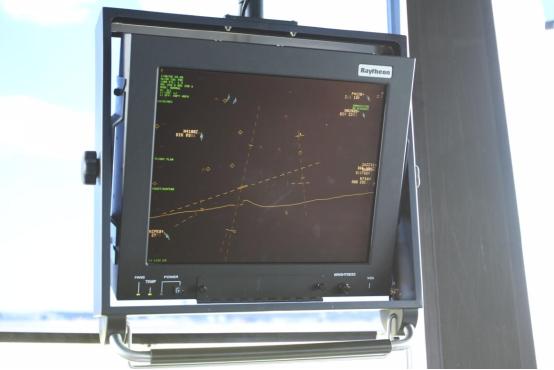
Tower RADAR Display
The volume of traffic in the terminal area requires the use of tower RADAR to augment
visual control of traffic in the vicinity of major airports. Factors that contribute directly to
the requirement are varying visibility conditions, a wide range of approach speeds, and
larger airport landing areas.
When properly used, tower RADAR systems reduce sequencing and traffic flow
problems and give you an earlier, more accurate look at developing traffic situations. By
providing you with the exact location of your traffic, tower RADAR indicators enable you
to sequence traffic accurately.
Tower Display Workstation
The Tower Display Workstation (TDW) runs on an open-architecture commercial UNIX-
based computer. It has the primary function of displaying RADAR data that has been
collected by RADAR sensors and processed by the RADAR Data Processor (RDP). The
processed RADAR data is combined with flight plan data and presented on a color
monitor (see Figure 5-13).
Figure 5-13 -- Tower display monitor.
The TDW workstation is normally assigned a specific volume of airspace, usually a
sector or a combination of sectors, within which flights are meant to be controlled by the
TDW controller. The TDW also provides access to Supervisor functions. Access to TDW
5-24



